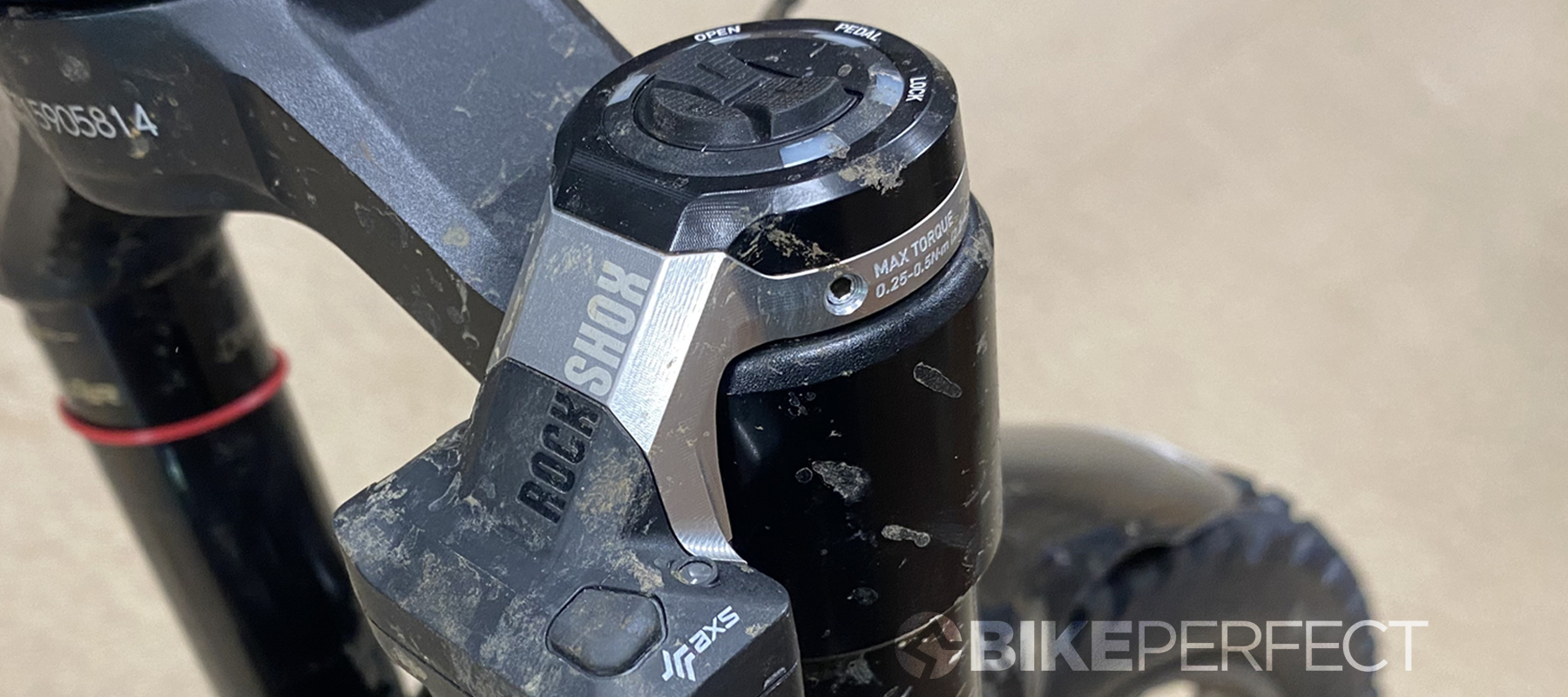Bike Perfect Verdict
It’s very exclusive. Very, very expensive and it adds weight and batteries to do a job you can sort of mimic manually. But the RockShox Flight Attendant truly takes overall bike performance to the next level, simply because it lets you ride faster everywhere without having to think about the suspension at all
Pros
- +
Next level fork and damper performance
- +
Super clean wireless system
- +
Automatic pedal efficiency
- +
Next level cornering and descending control
- +
Failsafe default to open not shut
- +
Easy to set up and adjust
- +
Override option
- +
Flawless foul weather reliability so far
Cons
- -
Very, very expensive
- -
Very, very very exclusive
- -
Adds weight
- -
More batteries to look after
- -
Larger shock won’t fit all bikes
- -
Basically just a very fancy dual-mode lockout
Why trust BikePerfect
RockShox Flight Attendant has taken nearly a decade to go from concept to production and it’s still currently only an option on six hyper-expensive complete bikes. We’ve been lucky enough to be able to give a fully RockShox Flight Attendant, SRAM AXS and Zipp wheel-loaded Trek Slash a seriously thorough workout in all conditions and ride scenarios though. When we say we’ve seen the light we don’t just mean the blinking LED on the fork crown either. So is this just a gimmick or will this naturally roll out into the best mountain bike forks in the future?
If SRAM's RockShox Flight Attendant is new to you, essentially it's electronic suspension technology designed to automatically adjust your fork and shock as you ride, giving you the best possible suspension settings for any conditions in real-time. It's as cutting edge as things get, but for a full explanation of conventional MTB fork and shock systems and how to get the best from them, check out our guide to mountain bike suspension set up.
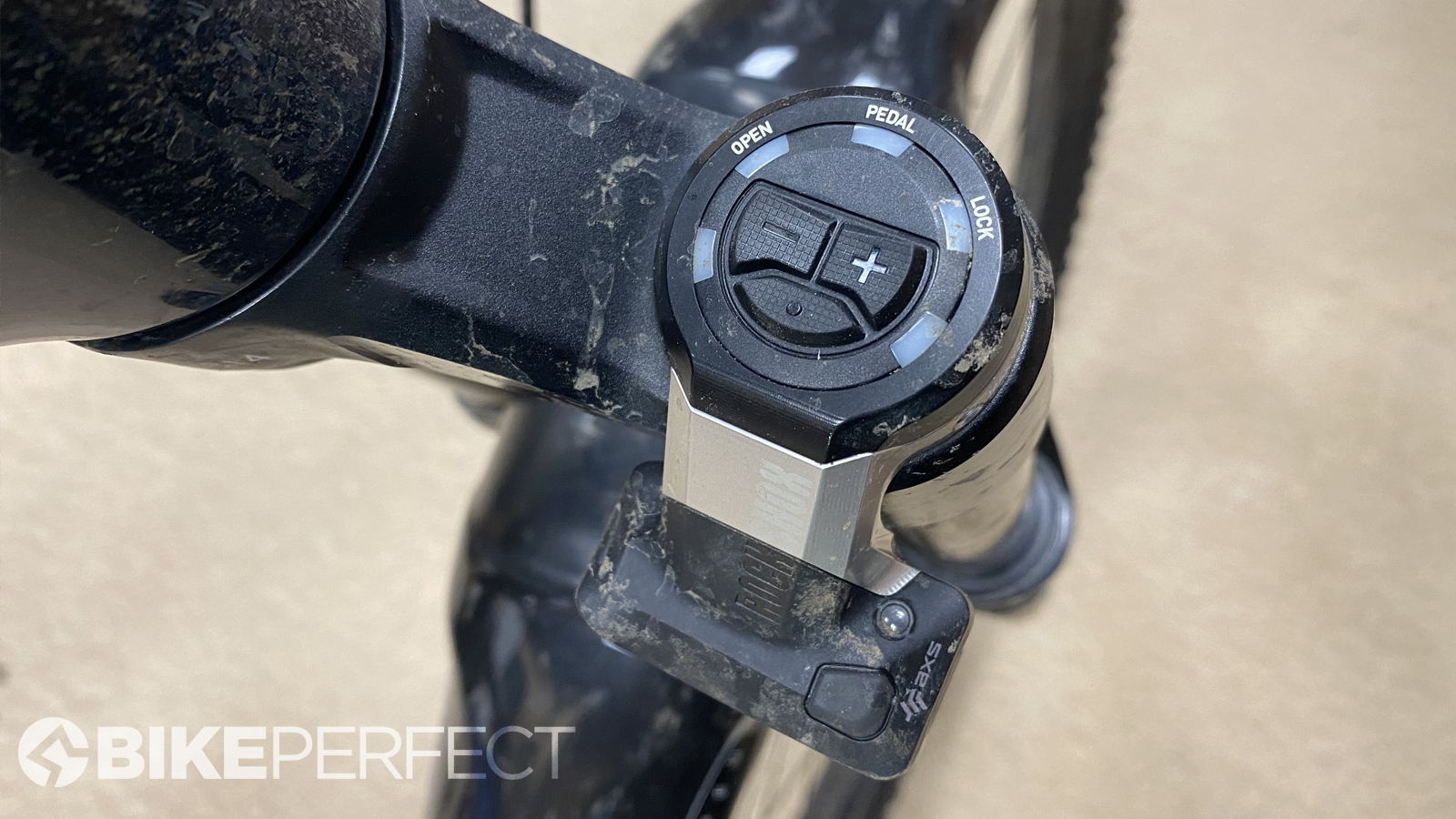
Hardware
Flight Attendant is formed by three sensor groups – one on the fork crown (of either a Zeb as we tested, a Lyrik or a Pike depending on the bike), one alongside the piggyback damper of a Super Deluxe rear shock and a final crank movement sensor that slides inside the DUB bottom bracket axle from the offside end.
The combination of sensors harvests impact, acceleration, tilt (vertical and lateral) and pedaling information and fires a 4D picture of what you and the bike are doing to the ‘control module’ on the back of the fork crown every five milliseconds. This then uses servo motors connected to the fork and shock dampers to switch, effectively instantly between locked, partially open ‘pedal’ and fully open low-speed compression settings depending on what your chosen bias of the exhaustively tested RockShox algorithm decides.
In terms of downsides that adds roughly 300g (including two rechargeable clip in AXS batteries and an AAA lithium battery) to the weight of the bike and more potential recharge/forgotten battery issues. It also puts the price of every Flight Attendant equipped bike well into superbike territory with Canyon’s $8,449 / £7,749 Neuron CF SLX LTD and Spectral LTD AXS 29 as the most ‘affordable’ options and Specialized’s S-Works Enduro LTD the most expensive at $12,500 (it’s not available in the UK). The Trek Slash 9.9, fitted with Bontrager wheels rather than Zipps, similar to the one we used in this review retails for a whopping $12,549.99 / £11,600.
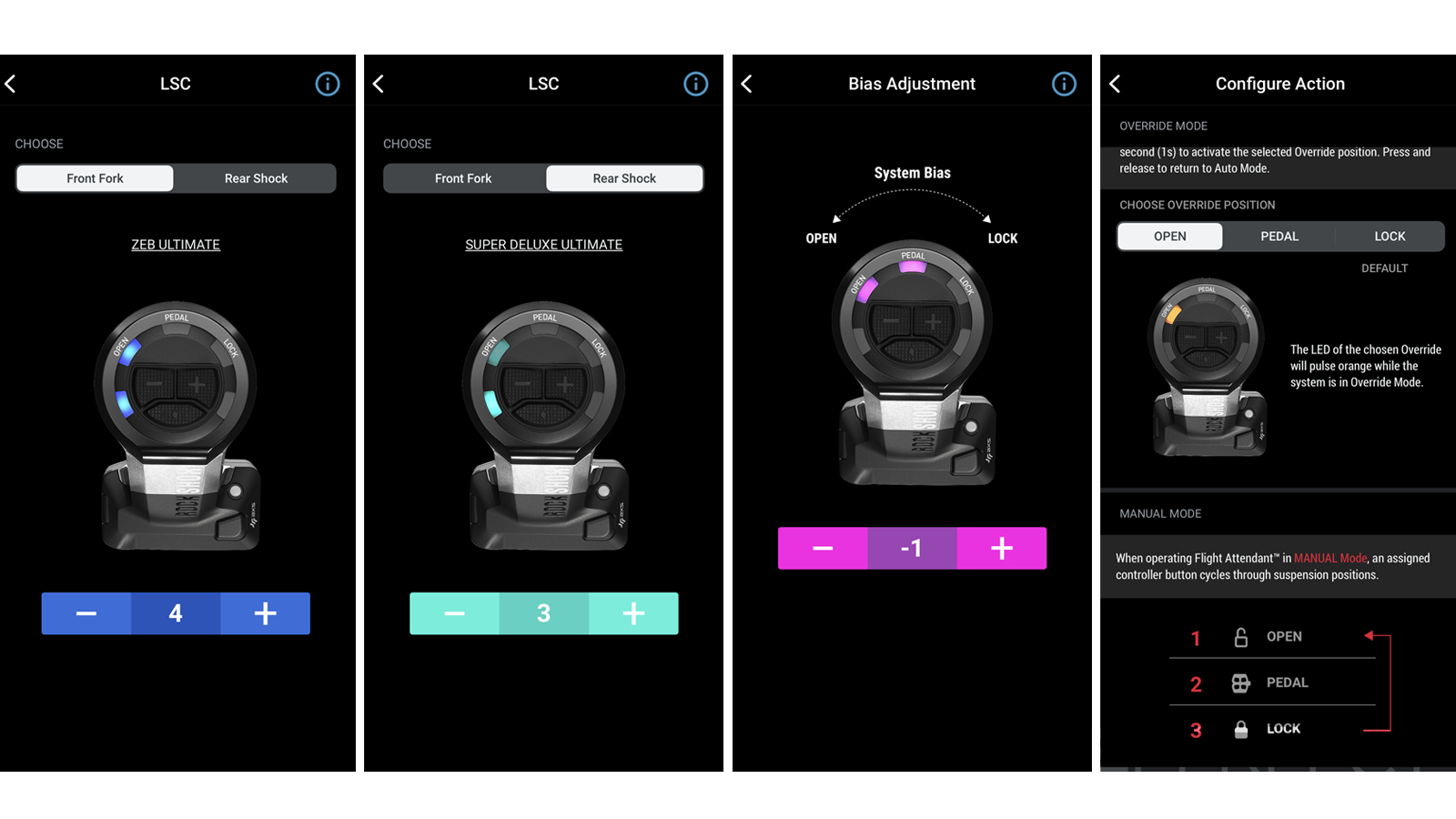
Software
We’re not using the term 'exhaustively tested' lightly here either. Flight Attendant started as a concept project for RockShox back in 2012 and while it provided the suspension hardware for the outwardly very similar Lapierre/Haibike EI auto damping system being developed back then, the software and sensor packs for that actually came from Abus.
The project developed from a single engineer harnessing up a suspension mule with data loggers and relentlessly harvesting data from different situations. It then gradually gained momentum as the team gained electrical engineers and even an algorithm expert who had honed his ‘emotive’ skills developing guitar effects pedals.
Over time the system also shifted from a simple front and rear on or off set-up to one with a middle pedal setting and the ability to run fork and shock in different modes. Adding a pedal sensor was also a big step in making the system predictive rather than purely reactive, as it will default to ‘open’ when you stop pedaling as it presumes you’re about to descend or hit something significant. The development of the AXS shift system provided the hardware to make the three sensors standalone wireless units.
It’s important to note that there is some rider input to the algorithm though as you can adjust ‘bias’ two points more towards either open or more closed/pedal depending on the baseline characteristics of the bike and your personal stiff or soft preferences. There are ten different ‘open’ mode low-speed compression settings of the fork’s ‘open’ mode which you can set with the fork top buttons or via the AXS app. You can also manually switch between modes or turn Flight Attendant off completely with the fork top button or by adding a separate left-hand AXS controller to your bars.
Pressure/sag and rebound are also user adjustable in the normal analog way while high-speed compression is fixed depending on the bike tune.
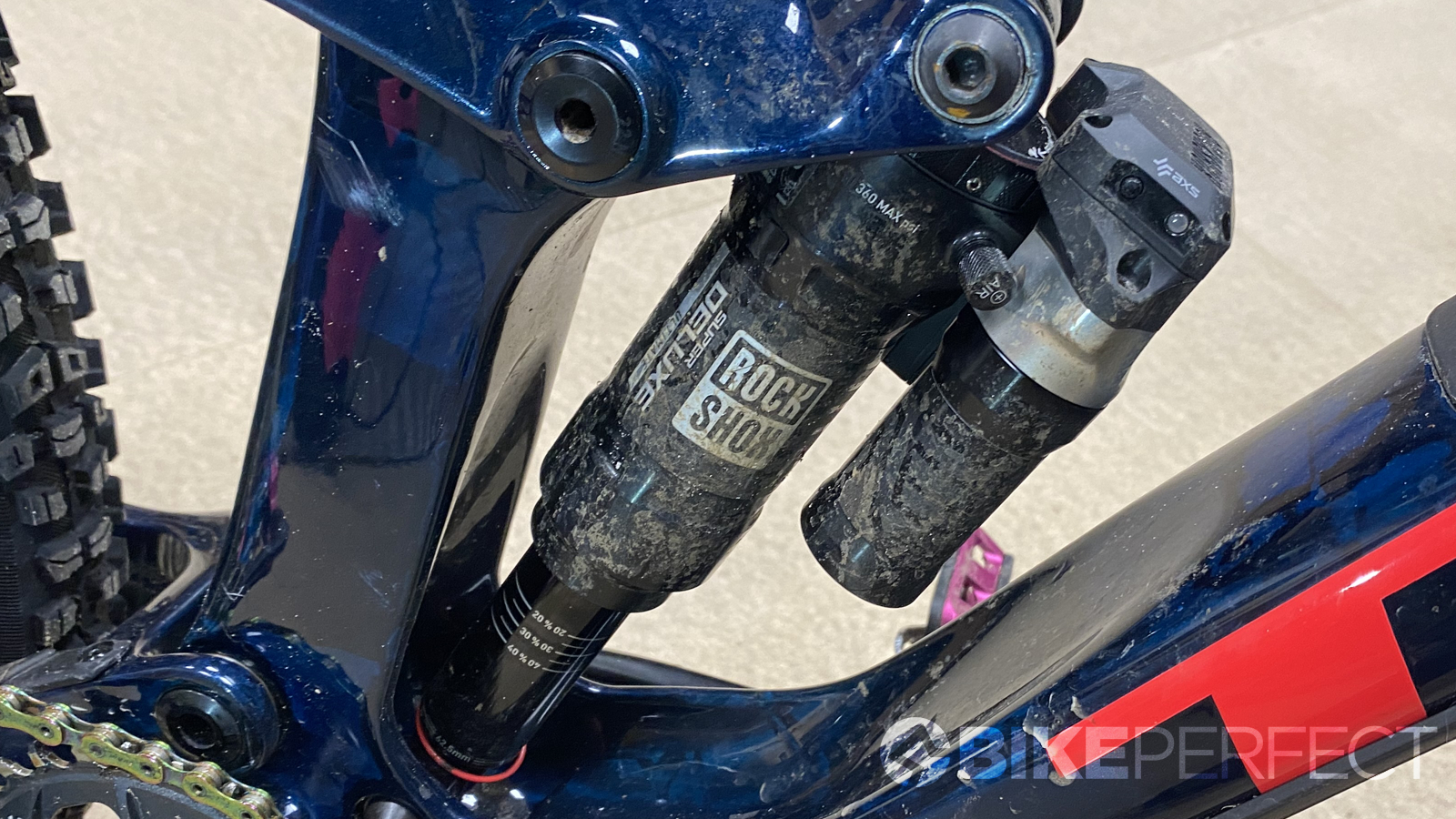
Suspension
While the electrical components of Flight Attendant are the limelight grabbers there are significant changes in the hardware, too. The forks get small conical rubber ‘ButterCup’ bumpers on the ends of the spring and damper shafts to suck up micro-bump vibration as well as pressure-release valves to purge excess low-leg pressure from heat build-up or altitude changes. Torque Cap adaptors are also supplied for use with wheels that don’t have the appropriate oversized contact ends, too. Out back the Super Deluxe damper also gets more rebound clicks (15 now) longer bushings and new seals to reduce friction and an optional hydraulic bottom-out damper (not used on our sample Trek Slash).
Set up
While it might be super tech, the whole point of Flight Attendant is to actually simplify the ride experience. Obviously, electro/technophobes are going to recoil at the idea of adding an electrical element to the set-up, but why have you even bothered reading this far if you already know you’re going to hate it? The usual occasional Bluetooth pairing issues aside, set up only takes a few minutes if you follow the simple calibration process which even includes leaning the bike over sideways to verify its tilt sensors.
Changing the bias and/or low-speed compression of shock and fork can be done manually via color-coded/clock face sequences using the fork top buttons or hands-free via the AXS app. Even if you manage to get lost in the set up process somehow (or a battery dies on you) Flight Attendant will default to ‘open’ mode as a fail-safe so it’s effectively impossible to ‘break’ the suspension in terms of locking it out unless you manage to lose a battery while the bike is locked out.
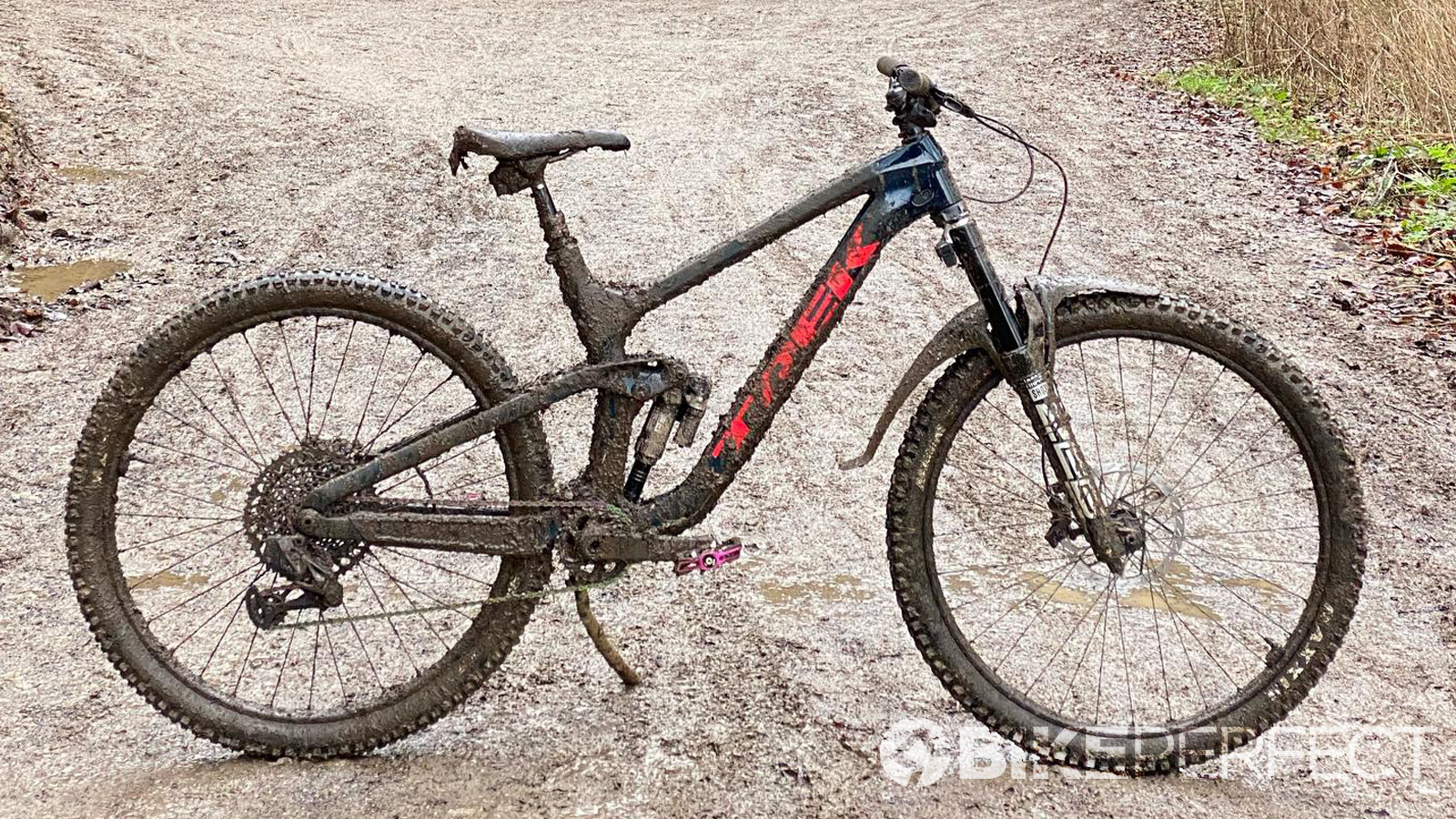
Performance
The first thing to say is that we’ve had zero issues with the set up in terms of loose or lost batteries, failed connections or any other glitches despite throwing sub-zero, regularly submerged or totally filthy mud conditions at it over the past couple of months. As it’s totally wireless there are no worries about cables getting stiff, seizing, ripping out, getting in the way of lights or fraying and sticking into you somehow either. In fact, seeing as you can actually turn the lights to ‘Dark Mode’ via the app the only potentially intrusive thing is the whirring of the servo motors as the shock and fork change modes.
The second thing to acknowledge is that on a simple climb-and-descend ride you can get similar shock mode results for a lot less money and weight just by twisting the fork damper dial and flicking the climb lever on the shock at the appropriate time. If you’re prepared to put up with the kind of cable entanglement that kept Sleeping Beauty trapped for 100 years, then Scott’s TwinLoc bar levers and triple mode suspension tech, which has been evolved over decades, means you can toggle instantly on the fly on rolling/changing trails, too.
The difference is that, according to RockShox and backed up by sections where we’ve filmed the changing LED patterns as the settings have altered, Flight Attendant is making several hundred adjustments an hour depending on bias settings and terrain. Crucially, it’s happening without you having to do anything at all, so you can concentrate entirely on the trail. Thanks to all the emotional engineering built into the electrics all the transitions and mixes of front and rear settings feel totally natural and brilliantly balanced not just a blunt transition from on to off that makes the bike feel unbalanced or unpredictable. In fact, if it wasn’t for the whirr you’d rarely notice the changes, you’d just be aware that for 99 percent of the ride the bike feels ‘just right’ for however/whatever you’re riding at that moment.
We say 99 percent of the time because there are occasional glitches in the matrix. We occasionally caught the suspension out and got a bigger thump than expected when sprinting along the trail and hitting a single root or rock. We had other moments when the differences between the five bias options were a bit coarse so it would either stay open on certain climbs when we’d rather it was shut or vice versa on rough ground. That means if we had to pick an improvement it would be to add more finely adjusted bias settings, but you can always override the Flight Attendant settings from the left hand AXS controller if you need to.
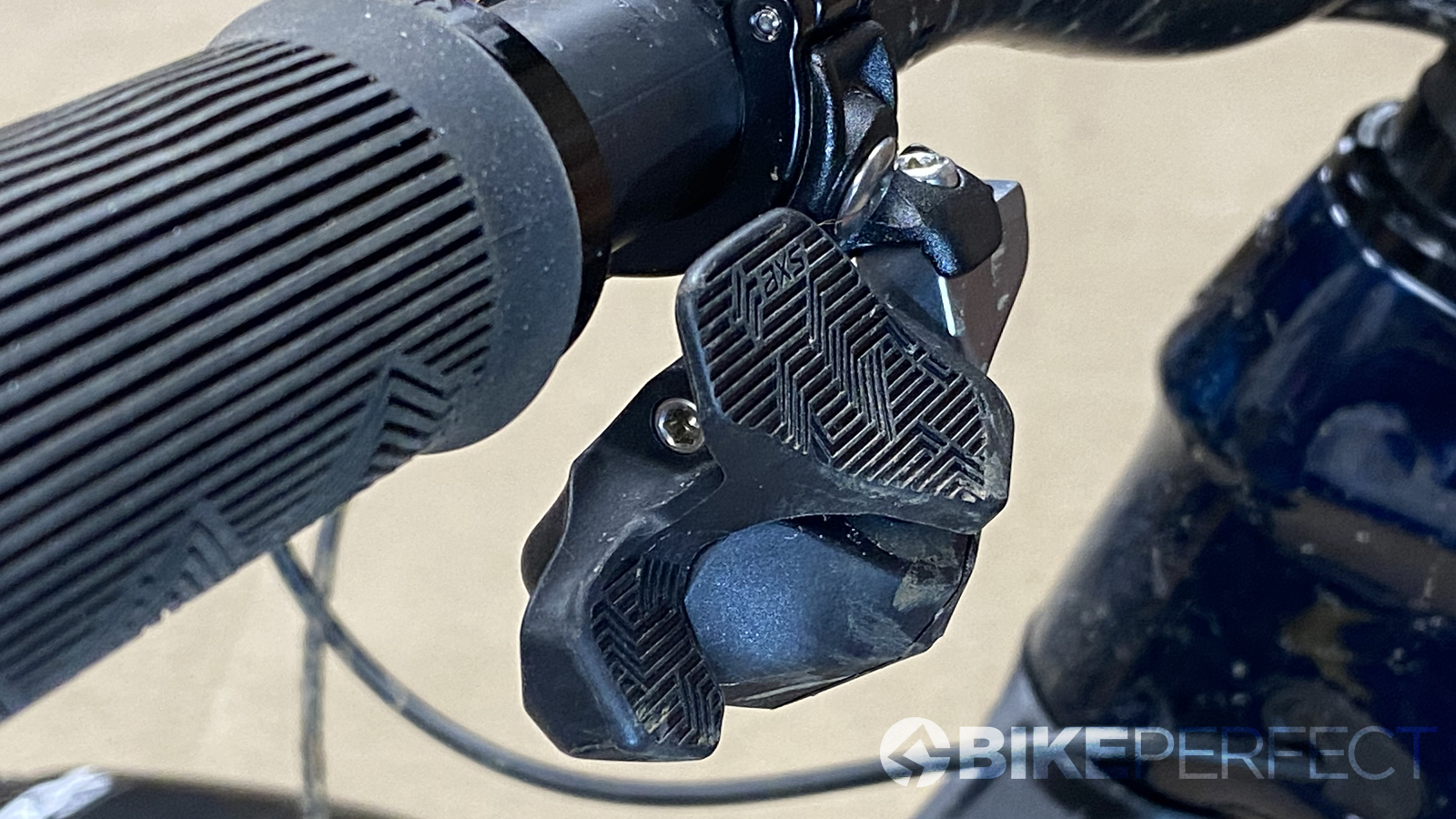
For the most part, though it feels as though you’ve got a skilled co-pilot on board, not just a Flight Attendant. This is most obvious on roller-coaster rise and fall or rough then smooth sections where one second you’re smashing the pedals to pick up speed, or driving hard through a smooth berm, but the next you’ve floated a crest into a blind rock garden or root spread.
Hammering hard through the pedals on a climb or sprinting out of a corner on smooth track and the Trek Slash was as super solid as you’d hope. Even climbing steadily it was a shock how much slower and harder work things felt when we deliberately turned the system off to see what happened. Because you don’t have to balance suspension settings between climbing efficiency and descending control we regularly found ourselves pedaling down big rocky descents where we normally hide behind the bars too. That meant we were consistently smashing PRs on segments we’ve been riding for years – even when we were hitting them in dark, wet, knackered at the end of rides conditions.
While we expected the system to give noticeable gains on descents and climbs what really surprised us was how well the setup worked in corners. On steep and sketchy trails the immaculate traction mixed with solid mid-travel support and rich tire load feedback made it feel like the Slash was creating its own catch berms even on the most blown out trails. It drifts exceptionally well too, keeping us feet up and laughing not hip down and hurting whether that was on loose rock, loam or winter slop.
That feeds into the overall vibe created by Flight Attendant, too, which is definitely very efficient when it needs to be but never feels over serious. In other words, while the Slash has always been accurate and efficient in feel, it’s often felt like a serious smasher rather than a bike that knows how to party. However, the responsiveness and immediacy of the suspension made it feel remarkably poppy and agile when we wanted to play off the trail, not just crush it. Add the power punch of Flight Attendant and it’s a total hustler in terms of getting the power down and chasing much lighter, shorter travel bikes on flatter or even climbing trails too and while it’s still a hefty bike at over 15kg, it dynamically feels a lot lighter.
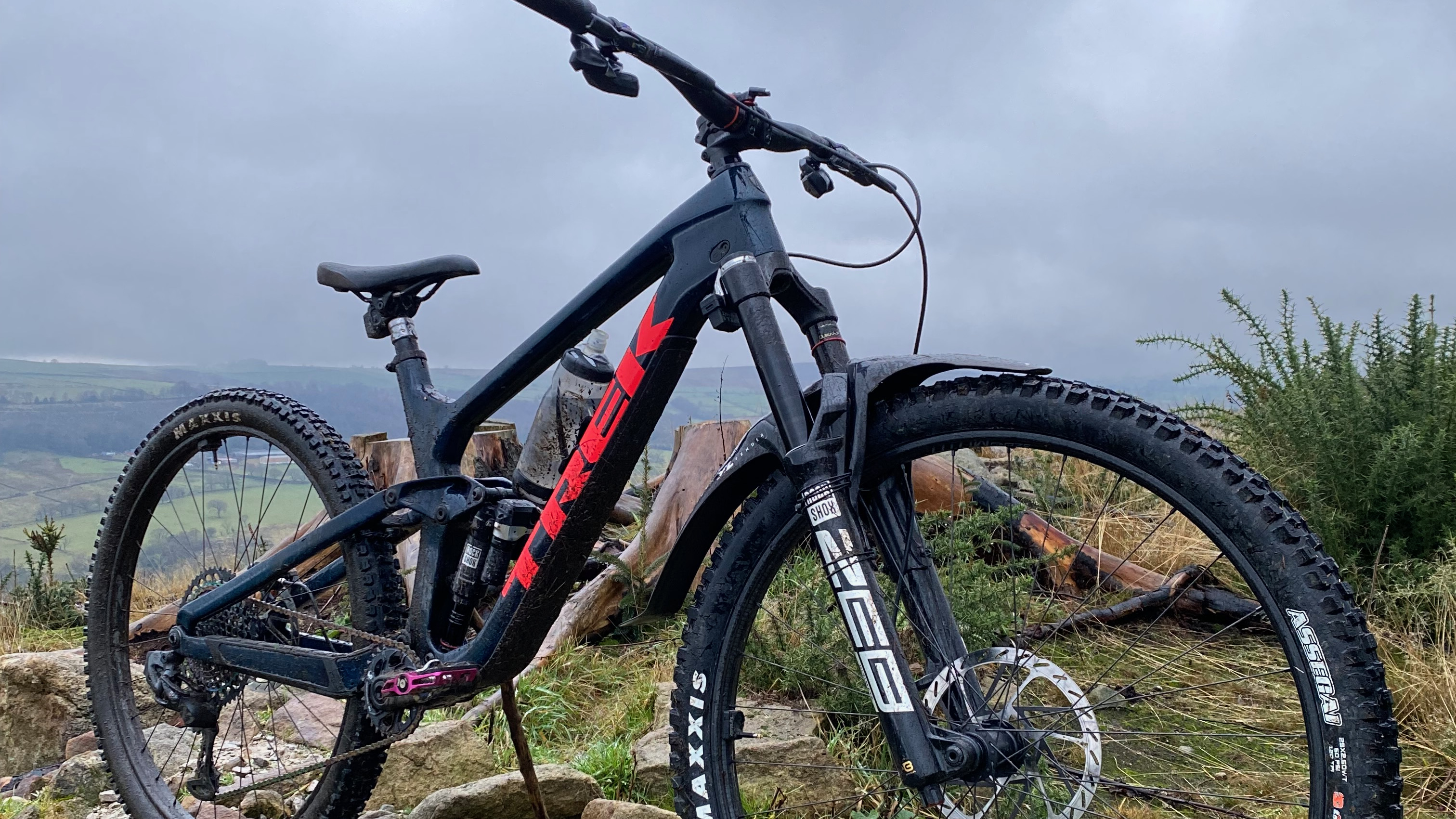
While the Flight Attendant mode toggling electronics are the headline element, the system ultimately only works as well as the underlying suspension and there’s no doubt that the changes RockShox has made give significant performance gains. Usefully we spent a long time last year on a very similar spec Trek Slash 9.9 and while it was very well sorted it’s clear that both the Zeb fork and Super Deluxe shock feel better than any we’ve previously tried. These gains are right across the board in terms of sensitivity, support and calm impact erasing and that obviously informs and enriches the whole ride in the pedal or fully open modes.
While those changes are currently only available on the Flight Attendant versions it’s reasonable to expect them to migrate across to updated ‘Ultimate’ versions at some point in the future. While it definitely makes a difference to pedaling efficiency most long-travel bikes now pedal pretty well anyway so the impact of the tech isn’t as dramatic as it would have been a few years ago.
As brilliant as it feels on the trail we need to circle back round to the huge price and extra weight downsides of Flight Attendant. Housekeeping elements such as the fact an AXS and Flight Attendant bike will have four rechargeable batteries and three non-rechargeable batteries to keep on top of can’t be ignored either and the bulkier rear shock won’t fit all bike frames even if the technology becomes more widely available. At the end of the day though being able to go clearly faster on every part of the trail because the suspension is working at its optimum without you thinking about it at all is pretty damn special.
Verdict
If you wanted to, you could roast RockShox’s Flight Attendant for being a prohibitively expensive and exclusive electrification of functionality that you can largely replicate with existing manual lockout systems. The background suspension advances that make it so outstandingly sensitive and controlled are presumably likely to appear without added batteries or bike restrictions at some point in the future, too.
In terms of using technology to actually simplify the thought processes and enrich the ride experience, it’s absolutely brilliant though and the advantages it gives when riding is both obvious and highly addictive. The brilliantly natural balance of the actuator algorithm, the essentially flawless functionality in all conditions and the neat wireless communication, control and user interfacing are massively impressive for a first-generation release too.
Given SRAM’s holistic evolutionary, ever more affordable approach to its AXS wireless ecosystem and the obvious advantages this system has for XC/downcountry applications, we can’t wait to see where SRAM takes it next either. In fact, if it gets enough momentum it could fundamentally affect the design of full-suspension bikes in the same way that self-stabilizing fly-by-wire avionics have changed fighter jets, too.
Tech Specs: RockShox Flight Attendant Suspension System
- Availability: Only available on complete bikes from Specialized, Canyon, Trek and YT
- Weight: Claimed to add around 300g over a comparable analog suspension

Guy Kesteven has been working on Bike Perfect since its launch in 2019. He started writing and testing for bike mags in 1996. Since then he’s written several million words about several thousand test bikes and a ridiculous amount of riding gear. He’s also penned a handful of bike-related books and he reviews MTBs over on YouTube.
Current rides: Cervelo ZFS-5, Specialized Chisel, custom Nicolai enduro tandem, Landescape/Swallow custom gravel tandem
Height: 180cm
Weight: 69kg
